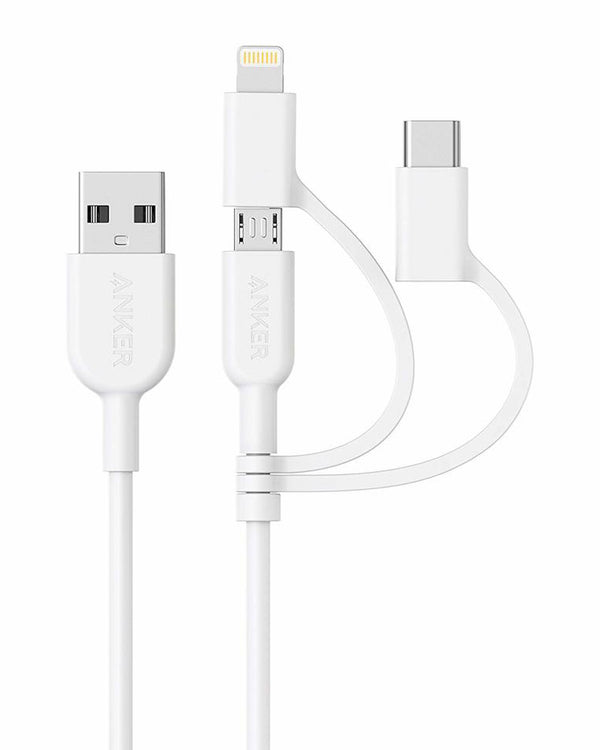- Joined
- Mar 30, 2005
- Messages
- 9,571
- Reaction score
- 25
- Points
- 48
Europe may require all manufacturers to use USB-C charging for all phones and electronic devices, according to a new EU Commission ruling proposal. It aims to reduce e-waste and "consumer inconvenience" caused by different and incompatible chargers still in use. The Commission also wants manufacturers to unbundle the sale of chargers with electronic devices.
"With today's proposal... USB-C will become the standard port for all smartphones, tablets, cameras, headphones, portable speakers and handheld videogame consoles," according to the report.
The EU said its work with industry has managed to reduce the number of mobile phone chargers from 30 to 3 over the last decade. One of those three is Apple's Lightning port used by around 20 percent of devices sold in Europe. The EU hopes to change that situation, according to a statement by executive VP Margrethe Vestager:
When a common charger was first voted on by the EU last year, Apple issued a statement saying that the proposal would "stifle innovation," and its position has not changed. "We remain concerned that strict regulation mandating just one type of connector stifles innovation rather than encouraging it, which in turn will harm consumers in Europe and around the world," an Apple spokesperson told the BBC.
Since the launch of the iPhone 12, however, Apple has stopped including chargers in the box, something it said would save 861,000 tons of copper, zinc and tin. Apple itself now uses USB-C charging on its latest Mac laptops and certain iPad models, since that standard supports higher voltage charging required for larger devices.
Nearly all Android smartphones now use USB-C charging, and many models from Samsung and others are sold with charging/data cables but not chargers. It total, around 420 million mobile phones and other portable electronic devices sold in Europe just in the last year.
The EU throws away 12,000 tons of chargers each year, some unused, according to Bloomberg. At the same time, consumers spend around 2.4 billion euros ($2.8 billion) on standalone chargers not included with devices. The law is still in the proposal stages and needs to be passed by EU lawmakers and governments, so it could come into force around two years after that.
Click here to view the article...
"With today's proposal... USB-C will become the standard port for all smartphones, tablets, cameras, headphones, portable speakers and handheld videogame consoles," according to the report.
The EU said its work with industry has managed to reduce the number of mobile phone chargers from 30 to 3 over the last decade. One of those three is Apple's Lightning port used by around 20 percent of devices sold in Europe. The EU hopes to change that situation, according to a statement by executive VP Margrethe Vestager:
European consumers were frustrated long enough about incompatible chargers piling up in their drawers. We gave industry plenty of time to come up with their own solutions, now time is ripe for legislative action for a common charger. This is an important win for our consumers and environment and in line with our green and digital ambitions.
When a common charger was first voted on by the EU last year, Apple issued a statement saying that the proposal would "stifle innovation," and its position has not changed. "We remain concerned that strict regulation mandating just one type of connector stifles innovation rather than encouraging it, which in turn will harm consumers in Europe and around the world," an Apple spokesperson told the BBC.
Since the launch of the iPhone 12, however, Apple has stopped including chargers in the box, something it said would save 861,000 tons of copper, zinc and tin. Apple itself now uses USB-C charging on its latest Mac laptops and certain iPad models, since that standard supports higher voltage charging required for larger devices.
Nearly all Android smartphones now use USB-C charging, and many models from Samsung and others are sold with charging/data cables but not chargers. It total, around 420 million mobile phones and other portable electronic devices sold in Europe just in the last year.
The EU throws away 12,000 tons of chargers each year, some unused, according to Bloomberg. At the same time, consumers spend around 2.4 billion euros ($2.8 billion) on standalone chargers not included with devices. The law is still in the proposal stages and needs to be passed by EU lawmakers and governments, so it could come into force around two years after that.
Click here to view the article...






